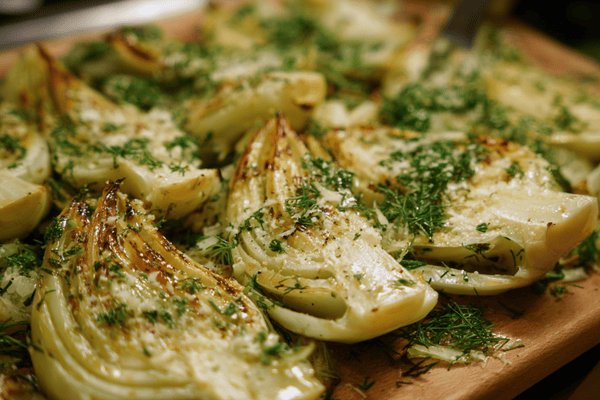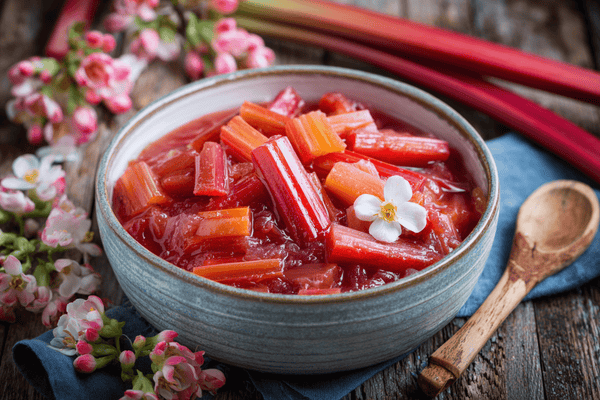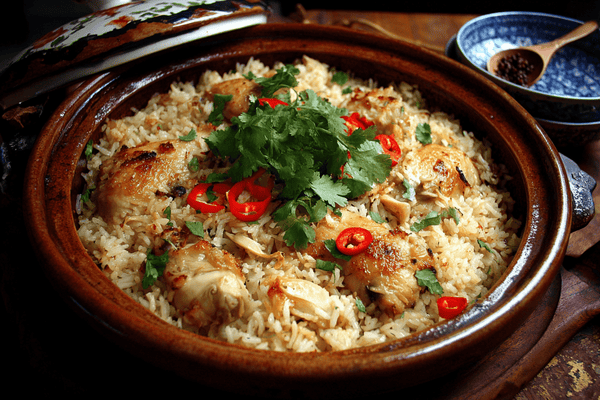 In the kitchen, we have a wide variety of tools and utensils to help make preparing food easy. One of the largest tools is the meat cleaver but despite its name, this chef's knife is a much more versatile tool than one might initially imagine and not only for professional butchers.
In the kitchen, we have a wide variety of tools and utensils to help make preparing food easy. One of the largest tools is the meat cleaver but despite its name, this chef's knife is a much more versatile tool than one might initially imagine and not only for professional butchers.But what are cleavers used for and why are they the perfect tool for all home cooks to have in the kitchen? With so many other types of cutting utensils, do we really need another one?
The truth is that meat cleavers are pretty essential and can make light work of tough jobs like meat and even cutting hard veggies like a squash. A lot of chefs even use their meat cleavers for crushing garlic, lemongrass and ginger.
So, we understand that the meat cleaver is an incredibly diverse piece of equipment. But if you’re looking to get to know this knife a little better and how to use a cleaver properly, this guide tells you everything you need to know. Let’s dive right in!
Table of contents
What Is a Meat Cleaver?
Meat cleavers are among some of the largest knives in your kitchen. However, while many people think of a large knife as being long, these blades are also very wide. They can vary in shape, size and styles but are generally wide rectangular blades with a super tough edge.The reason for this tougher-than-average edge is because of the way that the knife is used. Since this is a heavy-duty piece of equipment, the cutting edge needs to be more robust to meet the demanding use of the blade. As such, meat cleaver blades are not usually made from the same, thin hard steel as a Japanese kitchen knife. Instead, they’re manufactured using slightly softer, less brittle steel and are usually much thicker.
What Is a Meat Cleaver Used For?
 The term meat cleaver can lead you to believe that these knives are made exclusively to chop and slice meat. While that is their primary task, they are used by chefs for a whole host of other cutting jobs. But let’s start by looking at how well they cut meat before we investigate their other uses.
The term meat cleaver can lead you to believe that these knives are made exclusively to chop and slice meat. While that is their primary task, they are used by chefs for a whole host of other cutting jobs. But let’s start by looking at how well they cut meat before we investigate their other uses.Being thick and robust, meat cleavers are ideal for scaling fish, sectioning meat from the bone and chopping large pieces of meat into small sections.
But as well as this, your meat cleaver is an ideal candidate for things like chopping tough veggies. If you’re dealing with something like butternut squash, this can be incredibly tricky to cut through with any other type of blade. Moreover, the tough exterior of vegetables like this can cause damage to the brittle cutting edge of your prized Japanese knives. On the other hand, your meat cleaver will cut through without any issues.
On top of this, meat cleavers are perfect for crushing garlic, ginger and lemongrass. A lot of professional chefs use this method as it’s quick and incredibly effective.
So you see, while the name might be misleading, the meat cleaver is actually one of the most versatile knives in the kitchen and something you’ll reach for time and again.
Why Do Meat Cleavers Have a Hole?
 You may notice that some, but not all, meat cleavers have a hole in the top corner of the blade. Of course, some would argue this was purely for aesthetic purposes but I’d hasten to disagree. This hole does serve a few purposes so let’s take a closer look.
You may notice that some, but not all, meat cleavers have a hole in the top corner of the blade. Of course, some would argue this was purely for aesthetic purposes but I’d hasten to disagree. This hole does serve a few purposes so let’s take a closer look.
Easy Storage
One of the main reasons that a meat cleaver might have a hole is that it can be easily hung from a knife rack or hook. Most professional chefs will tell you that lying the meat cleaver flat on the preparation surface is a really bad idea as this will damage the blade.What’s more, since meat cleavers are large, sharp tools, the last thing you want is for them to be left lying around. If you store them in a drawer, there is a risk that you’ll cut yourself when you take the knife out and anyway, I’d never recommend storing knives this way as again, it can be damaging to the blade.
Hanging a meat cleaver from a hook is also a brilliant space-saving idea. These tools are pretty large and will take up a lot of space in a drawer. Having somewhere to hang them on the wall saves space elsewhere and allows you to easily grab them when the moment calls.
Avoid Getting Food Stuck
Isn’t it just so annoying when your knife blade gets stuck to the food you’re chopping on your cutting board? On some knives, such as the santoku, you will notice that there are small indents along the blade, called grantons, which are designed to prevent food from sticking.The hole on a meat cleaver largely serves the same purpose and will stop food from sticking so your life is that little bit easier.

If you are cutting through tough meat with bones then this hole can be a lifesaver! The cleaver may get stuck but the hole, and the slight angle of the cutting edge, allow you to safely pull the blade free without any hassle. If you’re going to buy a meat cleaver, then I would suggest choosing one with a hole for this reason alone.
What Are the Benefits of Owning a Meat Cleaver?
You might think that there’s really no need to add yet another blade to your kitchen knife collection. But the important thing to remember when choosing knives is that each one is designed with its own specific purpose.Yes, your gyuto or santoku knife will provide you with a degree of versatility and I’d be the first to tell you that you should have at least one of these knives in your collection. But if you need power and robust design along with that versatility then the meat cleaver is the obvious choice.
Much more than this, owning a meat cleaver means that you’ll open up a whole new world of opportunity in terms of what you can do in the kitchen. Without one, you’ll struggle to cut through bone and sinew so if you’re a meat lover then one of these knives should be on your shopping list!
How to Use a Meat Cleaver
If you have never used a meat cleaver before then you’ll probably find it a little strange once you have the tool in your hand. This is mainly because of the difference in size and shape to ‘regular’ knives so it can take a little getting used to.But don’t worry, using a meat cleaver isn’t difficult. You’ll need to start by making sure that you have a strong and sturdy chopping board. A lot of people are under the impression that they must have a butcher block but this isn’t necessarily the case. Provided that the cutting board is solid, you shouldn’t have any problems.
Secondly, it’s not always necessary to hack at the meat which is what most people think they need to do when using a meat cleaver. Yes, this may be the case for some foods but certainly not all. In some instances, it may be better to use the meat cleaver in the same way that you would use a chef’s knife, carefully slicing or splitting the food.
The way that you hold the meat cleaver is also important; you’ll need a very strong and stable grip on the handle. Hold it as though you are shaking hands with it and if you want a little more control, you can always put your thumb onto the spine.
When ‘hacking’ through food, you don’t need to go in as though you’re the antagonist in a horror movie. Meat cleavers are pretty heavy tools and it’s their weight that will do most of the work. Don’t make it more tiring on yourself than it needs to be.
Choosing the Best Meat Cleaver
 When it comes to buying a meat cleaver, you’re going to want to choose a tool that’s robust, stable, well-made and will stand up to the challenges it’s designed for. However, there are some meat cleavers out there that don’t live up to expectations so I’d always recommend taking a close look at what the tool has to offer before parting with your hard-earned cash.
When it comes to buying a meat cleaver, you’re going to want to choose a tool that’s robust, stable, well-made and will stand up to the challenges it’s designed for. However, there are some meat cleavers out there that don’t live up to expectations so I’d always recommend taking a close look at what the tool has to offer before parting with your hard-earned cash.
Dimensions
There are two things that you’ll want to consider when choosing a meat cleaver in terms of its dimensions; the length and the weight.When we talk about the length of the meat cleaver, we are talking about the measurement from the base of the handle to the very end of the blade. This is an important consideration because you’ll want to make sure that the handle fits nicely into your fist without you having to be anywhere near the blade.
Typically speaking, a good length is around six and a half to seven and a half inches. If it is too big then it’ll have a clumsy feel to it. On the other hand, if it’s too small, you’re going to find that you won’t be able to cut through the foods you need to.
On top of this, what a lot of people don’t realise is that the height of the meat cleaver blade is also important. At the very least, I would suggest going for something that is at least three inches to give you the height you need to get through those thicker foods.
Next, you must consider the weight of your meat cleaver. One of the most important things is to choose a cleaver that has a blade with a good amount of weight; considerably more than its handle. This will save your wrists and hands from becoming fatigued as the heavy blade will do all of the hard work for you. This is especially true if you are preparing larger portions of food or if you’ll get a lot of use out of the meat cleaver.
If you have chosen a six-inch blade, then this would typically weigh around 1lb but this can feel quite light to some people. On the flip side, that weight could double if you’ve gone for something around the eight-inch mark and that may feel a little too much. This is why it’s super important to try the knife out before you purchase it.
For something that would be called ‘ideal’, I would suggest looking for a meat cleaver that weighs anywhere between 15oz and 1.3 lbs as you’ll have enough weight to aid you in challenging cuts but not so much that it tires out your arm.
The Blade
 The blade is potentially the most crucial part of your meat cleaver as it’s the bit that’s going to be doing all the work. It doesn’t take us to tell you then, that it needs to be up to scratch!
The blade is potentially the most crucial part of your meat cleaver as it’s the bit that’s going to be doing all the work. It doesn’t take us to tell you then, that it needs to be up to scratch!One of the things that you’ll instantly notice about the meat cleaver is that the blade is markedly different to other types of knives. It must have a very sturdy belly as well as a good heel that allows you to rock back when cutting. How the blade is manufactured will really affect how well it performs as well as the price of the meat cleaver.
Another thing that’s going to affect how much you pay for the meat cleaver is whether the knife was forged or stamped. We have a more complex guide on forged vs stamped blades which you can read here. However, we just want to touch upon that now so you have a quick reference in this meat cleaver guide.
Forged knives are made from a single block of steel whereas stamped knife blades are ‘cut’ from a larger, thinner piece of steel. This makes them slightly less durable and also means that they do not have a full or partial tang. As a result of this, a stamped blade will normally be a lot cheaper. That said, while a good price can be tempting, We’d always recommend going for a forged blade as it will stand the test of time better.
Some knives are made using a combination of forging and stamping and these are OK in most cases. But before you commit to anything, we would recommend checking out the force that the meat cleaver is capable of.
Materials
Pretty much every knife out there, including meat cleavers, is going to be made from steel. But you have to keep in mind that there is more than one type of steel and that can impact how the knife performs. This matters in terms of how sharp the cleaver is, its weight, its durability and how it can be cleaned. Here are some of the most common types of steel used for meat cleavers and their pros and cons.
● High carbon steel is a mixture of iron and carbon and is one of the most durable types of steel. It’s also very easy to sharpen. However, the downside is that it is susceptible to rusting far more quickly than other types.
● Stainless steel will not rust anywhere near as quickly as carbon steel but since it is softer, you’ll find that it will dull a lot more quickly.
● Damascus steel has a beautiful appearance which is one of the main reasons that so many people choose it. It is also incredibly hard and ideal for the heavy-duty jobs that a meat cleaver needs to do. That said, this will usually be a false Damascus steel as the traditional methods for crafting this material have been long lost.
● Ceramic meat cleavers are brilliant in terms of how sharp and hard they are. However, they feel incredibly light which could be an advantage or a disadvantage, depending on how you look at it. These knives are very long-lasting but you will normally have to pay a lot more for one. Personally, I would see this as an investment.
● Titanium meat cleavers are not as sharp as other types but they’re highly resistant to rust.
Handle
 The handle on your meat cleaver is just as important as the blade which is why you should pay close attention to it. For starters, you’ll want to look at what material it is made from as this can make a huge difference in terms of comfort and how easy the knife is to grip.
The handle on your meat cleaver is just as important as the blade which is why you should pay close attention to it. For starters, you’ll want to look at what material it is made from as this can make a huge difference in terms of comfort and how easy the knife is to grip.Also, consider that meat cleavers with plastic or stainless steel handles are not only comfortable to use but are far easier to clean which is always a blessing when you buy a knife.
The size of the handle will also impact how easy the meat cleaver is to use so I’d suggest paying close attention to this. If it’s too large, you may not be able to get a proper grip on it so when buying, always make sure that you can try the knife out before committing.
Check how well balanced the handle and blade are. If the handle is heavier then this is not a good attribute for a meat cleaver. While most kitchen knives should have a very stable balance between the handle and the blade, it’s always better to go for a meat cleaver whose blade is a little heavier as it’s going to need to do a lot of the work.
Final Thoughts
Meat cleavers are large, rectangular knives that are much more versatile than you might first think. With the ability to crush garlic, chop vegetables and work through even the toughest meat and bone tasks, your meat cleaver will be a tool that you turn to time and time again.Remember to think carefully about the features of a meat cleaver before buying one as there are clear differences between products. You want to look for a well-made, robust tool that’s going to stand the test of time. Once you have your cleaver, it may take a little getting used to but it won’t be long before you’re confident chopping through a whole host of foods!


